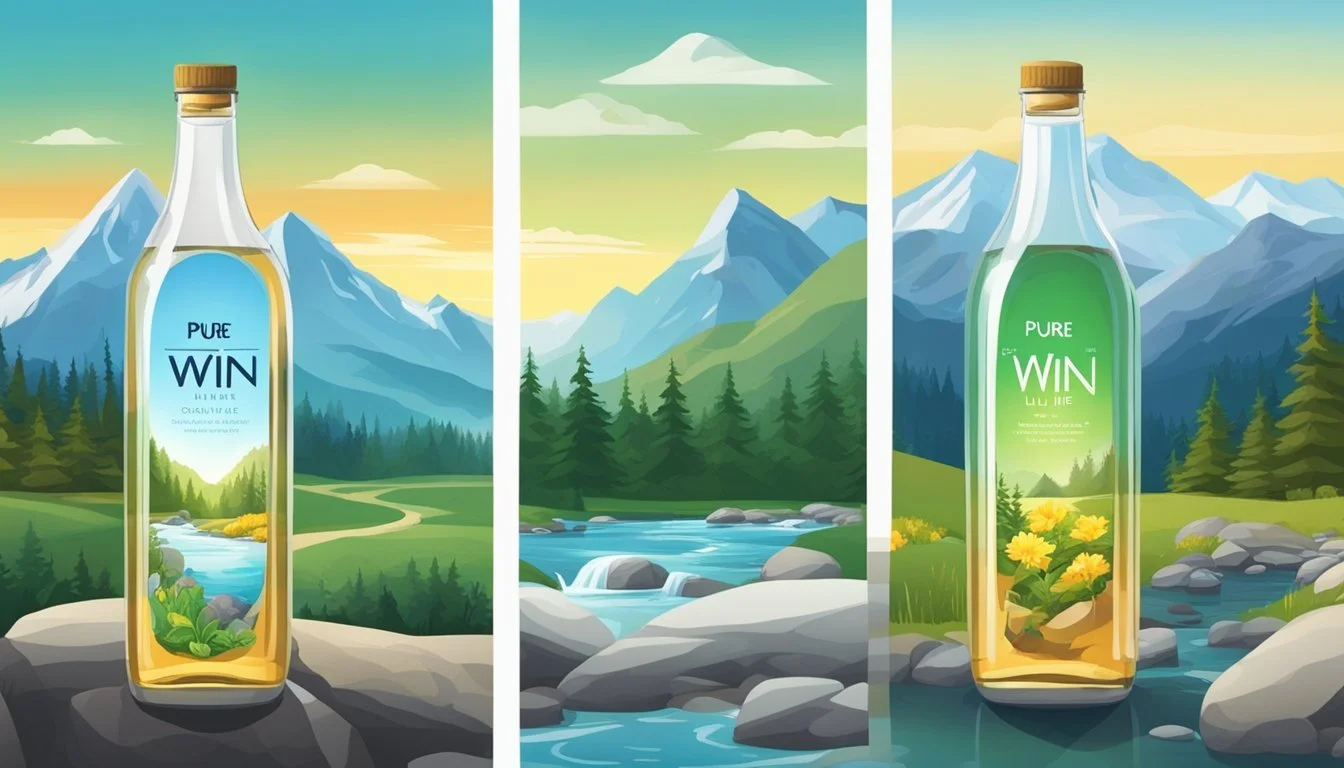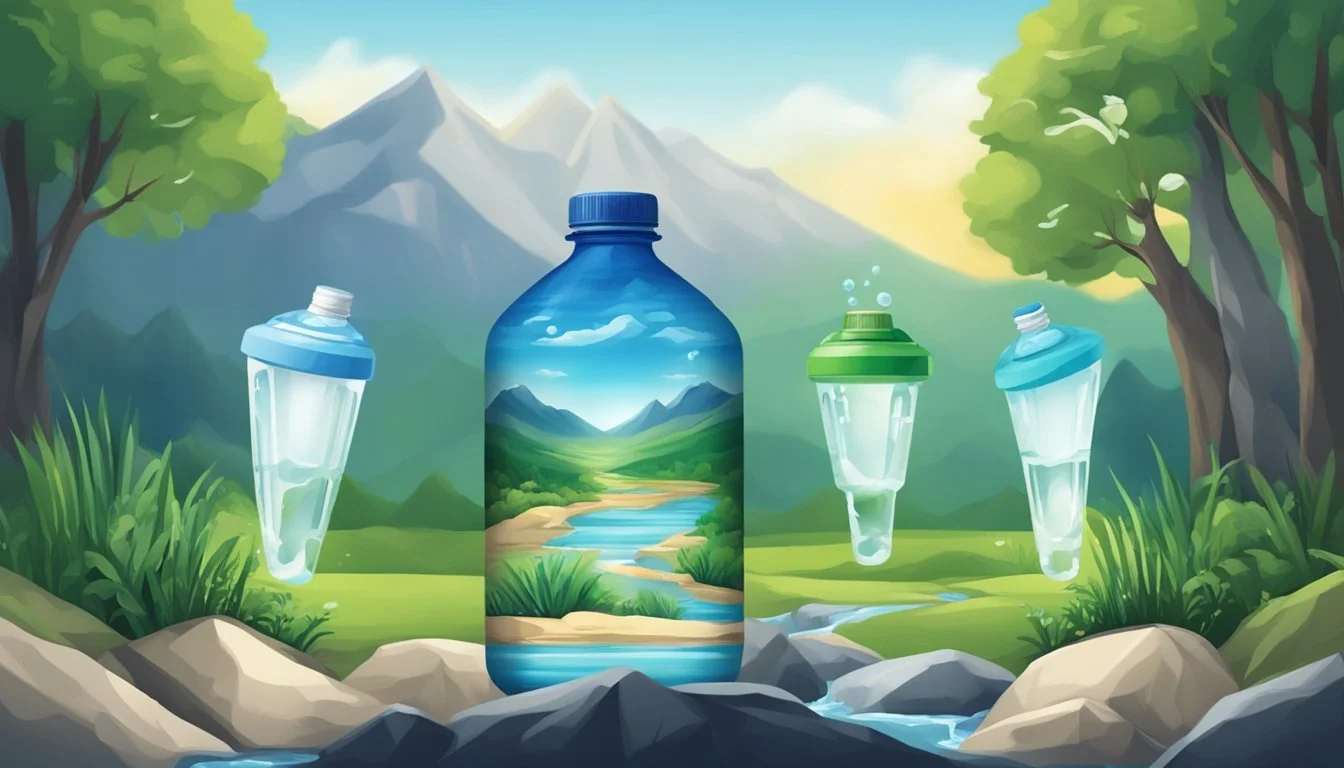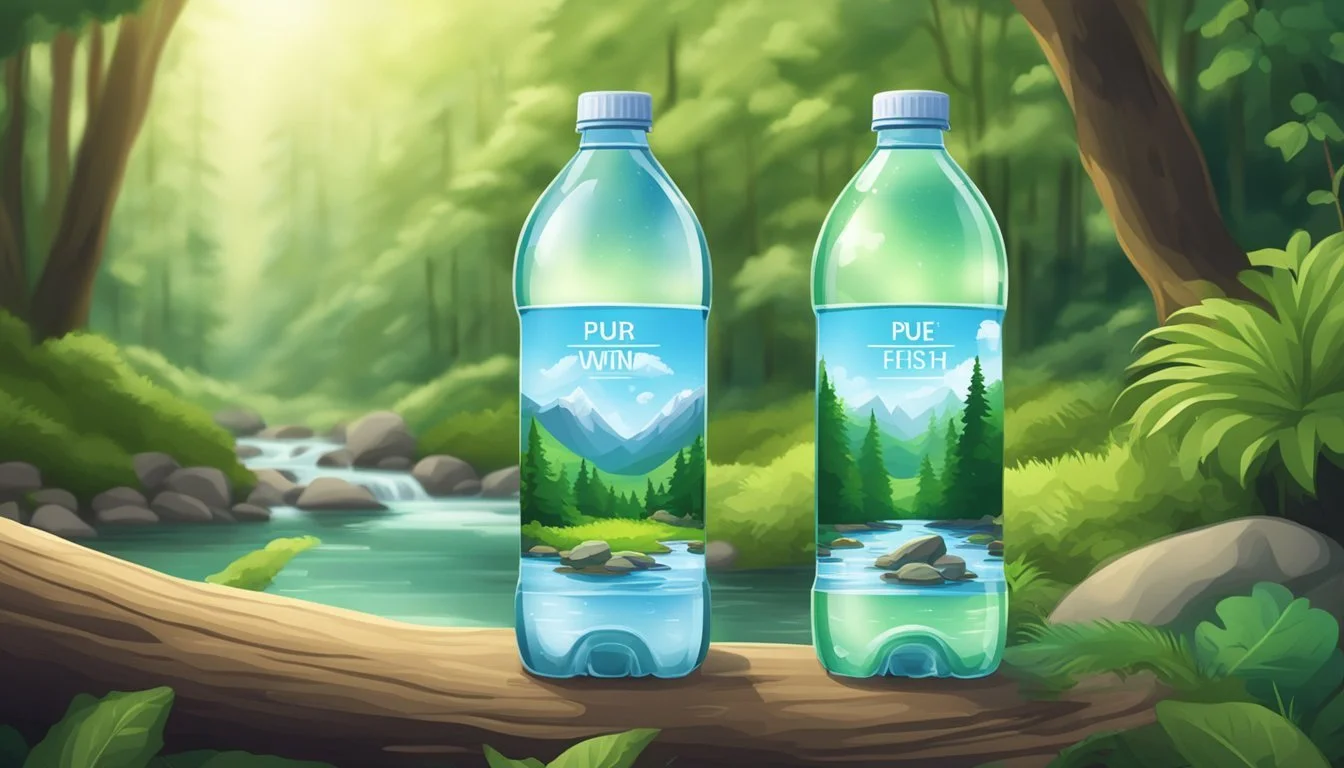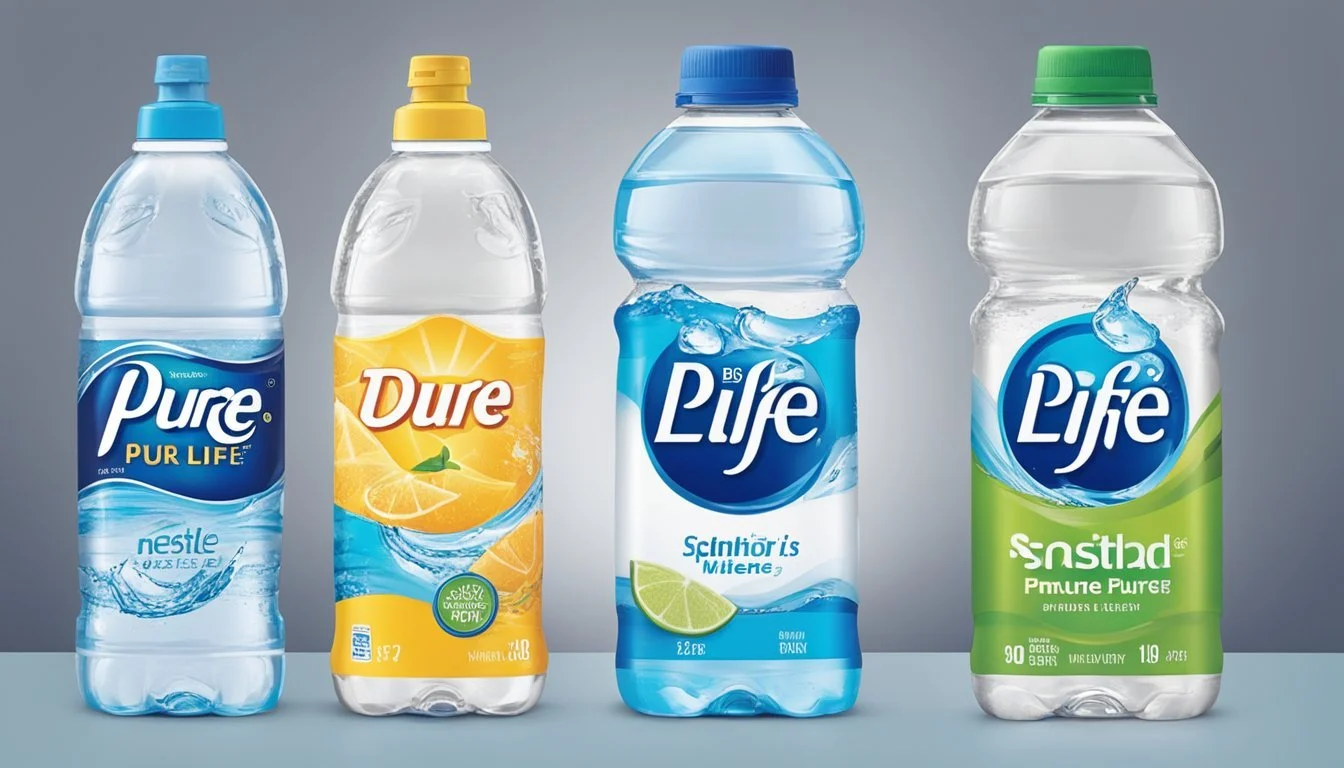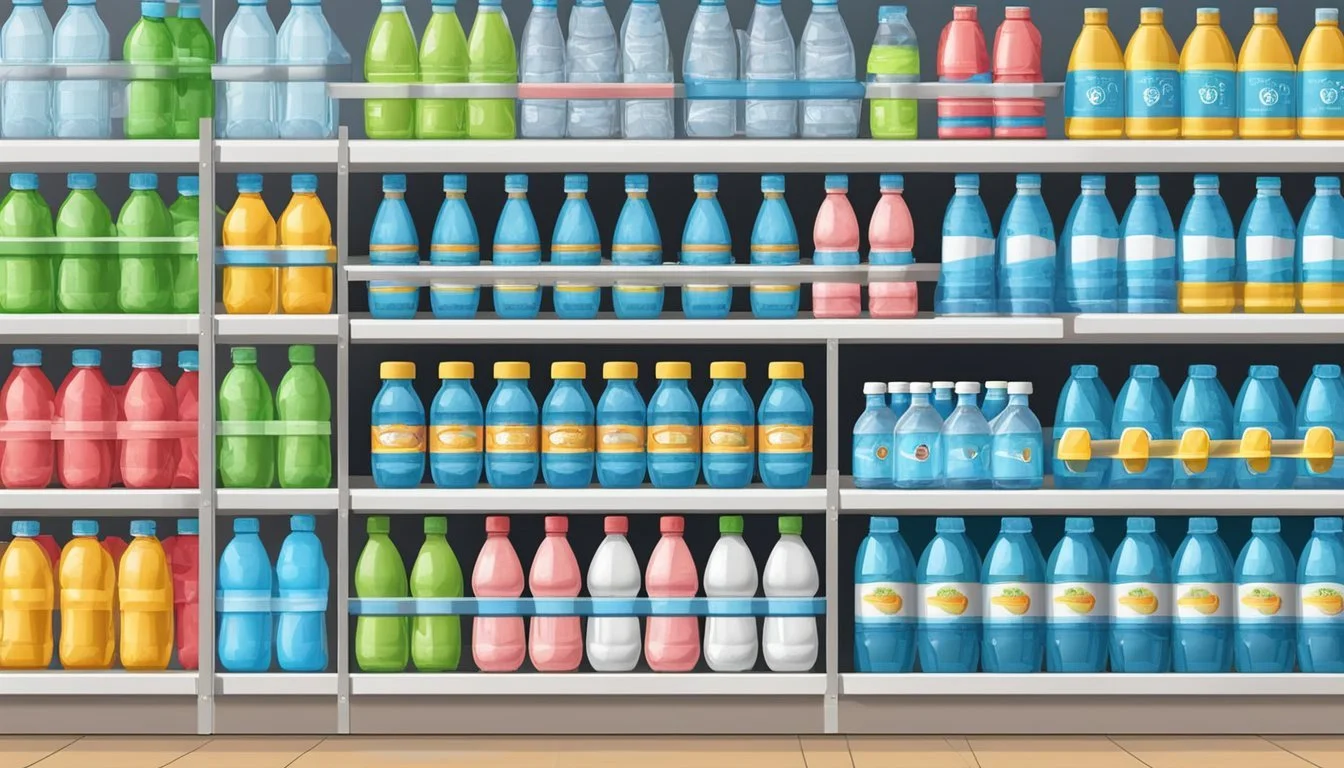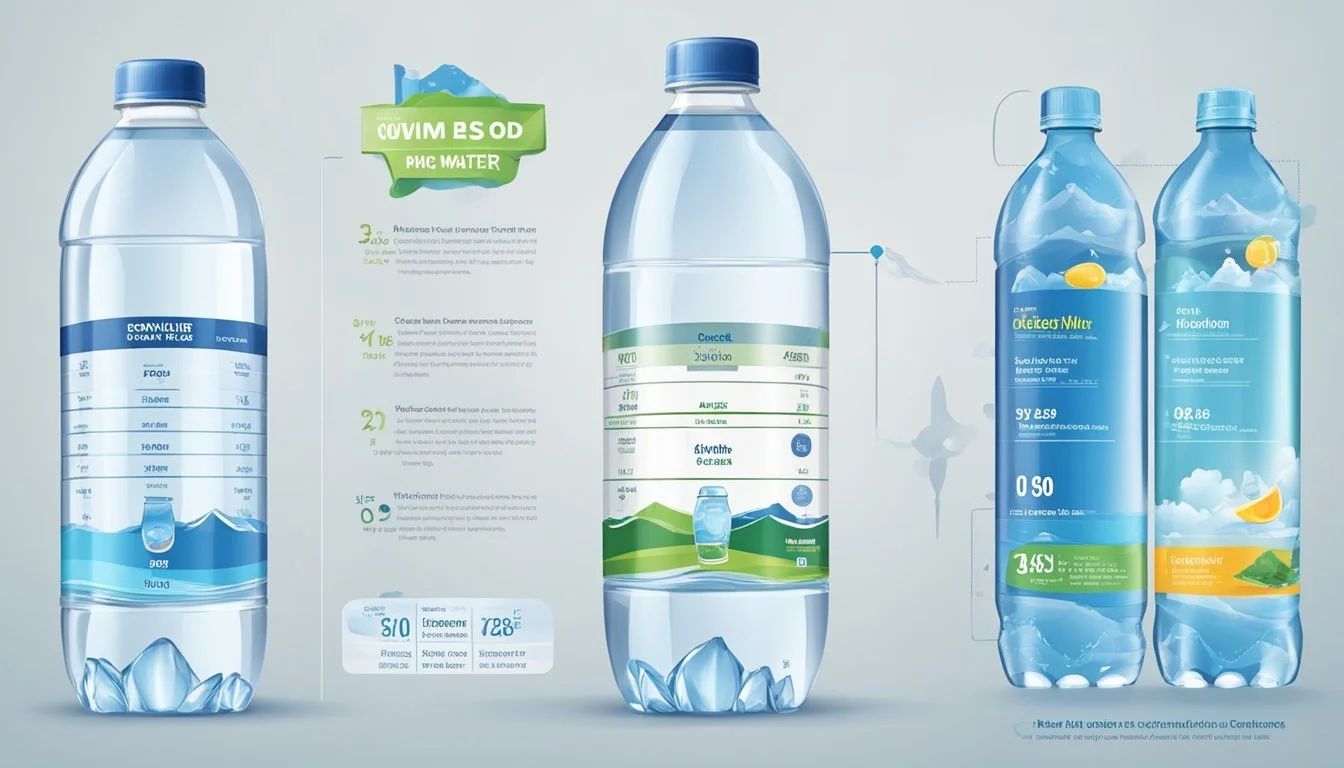Pure Life vs. Big Win
Evaluating the Best Bottled Water
When it comes to choosing bottled water, consumers often find themselves comparing popular brands like Pure Life and Big Win. Each brand promises quality and purity, but which one truly delivers?
Pure Life water is often criticized for its sourcing from city water supplies and well water, rather than pristine mountain springs. This might concern some consumers who are particular about the origins of their drinking water. Despite this, Pure Life goes through strict purification processes to ensure its quality.
Big Win, sold primarily through Rite Aid stores, offers a competitive alternative. Its source and filtration methods aim to provide clean, refreshing hydration. When evaluating both brands on taste, Big Win often receives more favorable reviews compared to Pure Life, making it a better option for those seeking a more enjoyable drinking experience.
The Bottled Water Industry Overview
The bottled water industry has seen substantial growth over the years, driven by consumer demand for convenience, quality, and health benefits. Key players in the market include Nestlé, Coca-Cola, and PepsiCo, with brands like Aquafina, Dasani, and Evian setting high standards for bottled water products.
Evolution of Bottled Water Consumption
Bottled water consumption has evolved significantly from being a luxury item to a staple for many households. Early bottled water brands like Perrier and San Pellegrino were seen as premium products.
The 1990s witnessed the rise of mainstream brands like Aquafina and Dasani, making bottled water more accessible. Today, the market offers a wide range of products from basic hydration options to enhanced waters with added minerals and pH balancing, catering to varying consumer preferences.
Major Bottled Water Brands
Several major brands dominate the bottled water market. Nestlé offers a variety of products such as Pure Life, Poland Spring, and Arrowhead. Coca-Cola's Dasani and PepsiCo's Aquafina are also major players.
Premium brands like Fiji, Evian, and Smartwater offer unique selling points, such as natural sources or added electrolytes. Brands like Voss and Icelandic Glacial emphasize purity and high-end packaging, appealing to luxury consumers.
Understanding the Demand for Bottled Water
Consumer demand for bottled water is driven by various factors. Health-conscious individuals opt for bottled water over sugary drinks for hydration. Convenience also plays a crucial role—bottled water is readily available in various sizes, making it easy to carry.
The rise in fitness and wellness trends also boosts demand for specialized waters like Core Hydration and Essentia, which promise better hydration and health benefits. Sustainability concerns are increasingly influencing consumer choices, with many opting for brands that offer environmentally-friendly options.
Regulatory Aspects Affecting Bottled Water
The bottled water industry is subject to strict regulations to ensure safety and quality. In the U.S., the FDA oversees bottled water standards, ensuring that it meets stringent safety metrics similar to tap water. Labels must clearly indicate the water source and the purification process used.
Internationally, regulations vary but generally focus on purity and safety. Brands must comply with these standards to enter different markets. Sustainability regulations are also becoming stringent, pushing companies towards eco-friendly packaging solutions and sustainable sourcing practices.
Quality and Purity Comparisons
In evaluating Pure Life and Big Win bottled water, understanding their quality and purity differences is essential. This includes examining water purity standards, filtering methods, and the role of natural minerals.
Assessing Water Purity Standards
Pure Life and Big Win must adhere to strict water purity standards set by the U.S. Environmental Protection Agency (EPA) and Food and Drug Administration (FDA).
Pure Life is classified as purified water, meaning it originates from a well or public source but undergoes treatment to meet purity criteria.
Big Win also undergoes rigorous testing to ensure it meets regulatory requirements. These standards ensure that both brands are free from harmful contaminants, ensuring safety and health for consumers.
Filtering Methods and Their Impact on Quality
The filtration process significantly impacts the quality of bottled water. Pure Life uses a multi-step filtration process, which often includes reverse osmosis, removing impurities and ensuring high purity levels.
Big Win employs similar filtration techniques, aiming to strip contaminants effectively.
Reverse osmosis, in particular, is adept at eliminating dissolved salts and organic material, contributing to both brands' clean, crisp taste. The effectiveness of these filtration methods directly influences the water's clarity and safety.
The Role of Natural Minerals in Water Quality
Natural minerals play a crucial role in water quality, impacting both taste and health benefits. Pure Life often adds essential minerals post-filtration to enhance flavor and contribute to hydration.
Big Win might similarly incorporate minerals, though the specific types and amounts can vary.
Commonly added minerals include calcium, magnesium, and potassium, which not only improve taste but also provide essential nutrients. The presence and balance of these minerals are key factors in determining the overall drinking experience.
Taste and Health Implications
Bottled water brands can vary greatly in taste and health benefits due to their sources, mineral content, and filtration processes. Differences in natural or purified sources and mineral profiles can affect both flavor and health implications for consumers.
How Different Sources Affect Taste
The taste of bottled water largely depends on its source. Spring water often has a natural, crisp taste due to its mineral content. For instance, Big Win sources its water from natural springs, which may carry a slight mineral flavor that appeals to some consumers.
On the other hand, purified water like Pure Life is typically neutral in taste. Purification removes any contaminants but also strips water of minerals, creating a clean but less distinct flavor. Some brands add minerals back to enhance taste. Consumers often notice these differences and may have a preference based on taste alone.
Health Benefits of Different Water Types
The source of water also impacts its health benefits. Spring water retains naturally occurring minerals such as calcium, magnesium, and potassium, which are essential for bodily functions. Big Win's water, for example, may offer these minerals in small amounts due to its spring source.
Purified water, while free of contaminants, typically lacks these minerals unless they are added post-purification. Pure Life often reintroduces minerals like calcium and magnesium to enhance both taste and nutritional value. The choice between spring and purified water may thus come down to personal preference and specific health needs, such as requiring mineral-rich water for better electrolyte balance.
The Importance of Hydration for Wellness
Regardless of the source, proper hydration is crucial for overall wellness. Water is vital for maintaining bodily functions including digestion, temperature regulation, and nutrient transport. Both Pure Life and Big Win emphasize hydration as a key benefit.
Regular consumption of water aids in maintaining optimal health and well-being. Drinking adequate amounts of water daily helps prevent dehydration, supports cognitive functioning, and can improve physical performance. Therefore, choosing a bottled water brand that suits one’s taste and health requirements can enhance daily hydration habits effectively.
Environmental and Sustainability Considerations
Examining the environmental impact of bottled water brands is crucial, focusing on production processes, waste management, and sustainable practices. This analysis covers ecological footprint, water sourcing, and packaging strategies.
Assessing the Ecological Footprint of Bottled Water
Bottled water's ecological footprint includes factors such as plastic waste and carbon emissions from transportation. Nestlé Pure Life uses a significant amount of plastic for its bottles, contributing to environmental waste if not properly recycled.
Big Win has also faced criticism for similar issues. Moving water long distances increases the carbon footprint. Both brands need improved recycling programs and sustainable materials to reduce their ecological impact.
Sustainable Practices in Water Sourcing and Packaging
Nestlé Pure Life emphasizes a comprehensive distillation process and rigorous quality assurance. Big Win sources water locally, reducing transportation emissions. Sourcing practices affect sustainability directly.
Packaging innovations are critical. Pure Life has made strides using recycled PET, while Big Win is exploring alternatives like glass bottles and boxed water. These materials are more environmentally friendly and could significantly reduce the brands' sustainability challenges.
Convenience vs. Environmental Impact
Consumer preference for convenience can conflict with environmental goals. Plastic bottles are convenient but harmful to the environment. Pure Life and Big Win are balancing convenience with sustainability by encouraging recycling and disposable alternatives.
Despite efforts, the trade-off between convenience and sustainability remains challenging. The brands need stronger initiatives to educate consumers on recycling practices and promote environmentally friendly packaging options.
Source and Origin of Water Brands
An in-depth look at the origins of different water brands reveals significant differences. From the purity of natural springs to carefully filtered tap water, understanding these sources helps in making informed choices.
Tracing the Sources: Aquifers and Natural Springs
Aquifers and natural springs are critical origins for many bottled water brands. Mountain Valley Spring Water, for instance, sources its water from Arkansas' natural springs. These underground reservoirs are renowned for providing clean, mineral-rich water.
Fiji Water is another brand that prides itself on its remote, aquifer-sourced supply. Originating from an artesian aquifer in Fiji, its isolation from industrial contaminants is a significant selling point.
In contrast, Nestlé Pure Life focuses on multiple sources, often tapping into municipal supplies before treating the water through stringent purification processes.
Comparing Spring Water and Purified Water Origins
Spring water and purified water have distinct differences in their origins. Spring water, like that of Mountain Valley and Poland Spring, is collected directly from natural springs. These sources often boast a higher mineral content and a more "natural" taste.
On the other hand, purified water, as provided by Dasani and Nestlé Pure Life, typically originates from municipal sources. This water undergoes processes like reverse osmosis, distillation, or deionization to remove impurities and ensure a consistent taste and quality.
Pure Life specifically emphasizes its purification, ensuring it meets strict safety and quality standards despite starting from public water supplies.
Transparency in Water Sourcing Processes
Transparency in sourcing processes is increasingly important to consumers. Nestlé Pure Life is upfront about sourcing water from both municipal and well sources, later purifying it through a multi-step process. This transparency helps build consumer trust and informs purchasing decisions.
Mountain Valley Spring Water is clear about its spring sources in Arkansas, adding to its credibility.
Brands like Dasani openly disclose that their water comes from local water supplies, undergoing filtration to meet stringent quality standards. This level of transparency is critical in an industry where consumers demand more information about what they are drinking.
The Battle of Brands: Nestlé Pure Life vs. Big Win
This section explores the strategies, product offerings, and reputations of Nestlé Pure Life and Big Win bottled water brands. By understanding these aspects, readers can make a more informed choice between the two.
Comparing Brand Strategies and Consumer Trust
Nestlé Pure Life, produced by Nestlé Waters, relies on its reputation as part of the world's largest bottled water company. It emphasizes extensive purification processes. This purification involves multiple filtration stages designed to ensure purity and safety.
Big Win, a brand under the umbrella of Rite Aid, positions itself as a cost-effective yet reliable option. It attracts budget-conscious consumers looking for quality without the premium price. While it might not have the same global recognition as Nestlé, it competes through availability and affordability.
Consumer trust plays a critical role for both brands. Nestlé Pure Life leverages the trust built over decades in the bottled water industry. Big Win, on the other hand, relies on the trust consumers have in Rite Aid's private-label products.
Product Offerings: Varieties and Unique Selling Propositions
Nestlé Pure Life offers a variety of bottled water products that span from standard purified water to enhanced versions with added minerals. These products cater to different consumer preferences, including those who seek specific taste profiles or health benefits.
Big Win's product line is more straightforward, focusing mainly on purified water in various sizes. Its unique selling proposition lies in affordability and convenience, making it a go-to for shoppers within Rite Aid stores.
The versatility of Nestlé Pure Life’s offerings means higher consumer preference due to more options. Big Win's simpler approach may appeal to those who prioritize practicality and cost savings over variety.
Examining the Reputation and Reviews of Each Brand
Nestlé Pure Life has a mixed reputation among reviewers. While it is praised for its reliable quality and adherence to health standards, some critics find its taste lacking compared to natural spring waters.
Reviews of Big Win often highlight its value for money. Though it may not match premium brands in taste, it is seen as a solid choice for everyday hydration.
Analyzing customer feedback, Nestlé Pure Life benefits greatly from its established presence and perceived purity. Conversely, Big Win is recognized for meeting basic expectations without a hefty price tag, making it popular among Rite Aid's regular customers.
Packaging and Convenience Factors
The packaging materials and convenience are crucial elements when assessing bottled water options like Pure Life and Big Win. They directly influence environmental impact, user experience, and overall functionality.
Evaluating Different Packaging Materials
Plastic Bottles: Both Pure Life and Big Win primarily use plastic bottles, which remain popular due to their lightweight nature and break resistance. Yet, these plastic bottles contribute significantly to environmental waste if not recycled properly.
Recycling Efforts: Nestlé Pure Life has made strides in enhancing its sustainability by incorporating recycled materials into its packaging. This aims to reduce its carbon footprint and encourage recycling.
Alternative Packaging: While plastic remains dominant, glass bottles are occasionally used due to their eco-friendly profile. Glass is 100% recyclable and does not degrade over time, presenting a sustainable option despite being heavier and more fragile.
The Role of Convenience in Bottled Water Choices
Portability: Plastic bottles offer undeniable convenience due to their lightness and durability, making them ideal for on-the-go hydration. Both Pure Life and Big Win leverage this advantage.
Availability: Pure Life enjoys a broad market presence, often found in various retail settings, enhancing its accessibility. Big Win also maintains widespread availability but primarily caters to specific regions or store brands.
Usability Features: The design of the bottles, including ergonomics and cap types, directly impacts user convenience. Screw-off caps are most common and user-friendly, facilitating easy opening and closing.
Bulk Purchases: For frequent users, bulk packaging offers substantial benefits. Both brands provide options for multi-pack purchases, reducing the need for repeated trips to the store and offering price advantages.
Dietary Considerations in Water Consumption
Consumers often look beyond just the taste and quality of bottled water, focusing on how it fits into their dietary needs. Two essential aspects to consider are the pH levels and the mineral content of the water, each playing a distinct role in health and wellness.
The Significance of pH Levels and Balanced Water
The pH level of water indicates its acidity or alkalinity, which can impact overall health. Pure Life and Big Win bottled waters typically have pH levels ranging between 6.5 and 8.5, falling within the neutral range, optimal for most diets.
Why pH matters:
Acidity vs. Alkalinity: Higher pH levels (>7.0) are considered more alkaline, which might help neutralize excessive acidity in the body.
Balanced pH: Maintaining a balanced pH can support metabolic processes and overall bodily function.
Understanding pH levels can help consumers choose water that aligns with their dietary needs and preferences, such as mitigating acid reflux or improving hydration efficiency.
Essential Minerals and Their Dietary Contributions
Bottled waters like Pure Life and Big Win often contain essential minerals such as calcium, magnesium, and potassium, each contributing to dietary health.
Key minerals and benefits:
Calcium: Supports bone health and dental hygiene. It is often present in smaller quantities but is still crucial for preventing deficiencies.
Magnesium: Helps with muscle and nerve function, blood sugar control, and blood pressure regulation.
Potassium: Vital for heart function and muscle contractions, aiding in reducing the risk of chronic illnesses.
Consumers with specific dietary requirements, such as those needing to increase their intake of these minerals, should pay attention to the mineral content listed on the bottled water labels to make informed choices.
Consumer Insights and Market Trends
An analysis of consumer behavior and emerging market trends reveals changing preferences and priorities in bottled water choices. Factors such as taste, sourcing, environmental concerns, and lifestyle preferences play a crucial role.
Understanding Consumer Preferences and Priorities
Consumers prioritize taste, accessibility, and health benefits when selecting bottled water. Big Win and Pure Life are often compared based on taste.
Shoppers look for options widely available in grocery stores and vending machines. Consistent quality is necessary, as evident in Pure Life’s reputation. The purification process and mineral content also impact choices.
Environmental considerations are increasingly important. Many prefer brands with a smaller carbon footprint and sustainable practices. Lifestyle factors, such as active living, also influence preferences. Water sommelier reviews often highlight these aspects to guide consumer choices.
Emerging Trends in the Bottled Water Market
New trends are shaping the market. There is a growing focus on sustainability and eco-friendly packaging. Brands like Pure Life emphasize their conservation efforts to attract environmentally conscious consumers.
Premiumization of bottled water is another trend. Some consumers are willing to pay more for superior taste and quality. This has led to a rise in niche markets catering to specific needs and preferences, such as flavored or enhanced water.
Technological advancements in purification and bottling processes are also impacting the market. Smart packaging and innovations improve product transparency, offering detailed information about sourcing and processing methods. This meets the demand for more informed choices.
These trends indicate a dynamic market where consumer values and technological advancements continue to shape the future of bottled water.
More About Pure Life
Cascade Mountain vs Pure Life: Which Bottled Water is Better?
Hawaii Volcanic vs Pure Life: Which Bottled Water is Better?
Hawaiian Springs vs Pure Life: Which Bottled Water is Better?
Icelandic Glacial vs Pure Life: Which Bottled Water is Better?
Nestle Pure Life vs Pure Life: Which Bottled Water is Better?
Pure Life vs Kirkland Signature: Which Bottled Water is Better?
Pure Life vs Whole Foods 365: Which Bottled Water is Better?
Richard's Rainwater vs Pure Life: Which Bottled Water is Better?
Solan de Cabras vs Pure Life: Which Bottled Water is Better?
Talking Rain AQA vs Pure Life: Which Bottled Water is Better?
Whole Foods Italian Still Mineral water vs Pure Life: Which Bottled Water is Better?
More About Big Win
Big Win vs Kirkland Signature: Which Bottled Water is Better?
Icelandic Glacial vs Big Win: Which Bottled Water is Better?
Mountain Valley Spring Water vs Big Win: Which Bottled Water is Better?
Richard's Rainwater vs Big Win: Which Bottled Water is Better?
Whole Foods Italian Still Mineral water vs Big Win: Which Bottled Water is Better?

